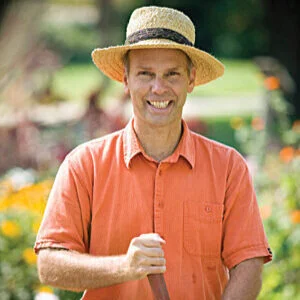No-Dig Gardening
Garden expert Charlie Nardozzi talks about no-dig gardening
In a broadcast that originally aired live on The Food Garden Life Radio Show, we chat with Vermont garden educator and radio host Charlie Nardozzi.
Nardozzi discusses his journey into no-dig gardening—and why it’s good for gardeners, the soil, and the environment.
He also tells us about his new book, The Complete Guide to No-Dig Gardening.
Nardozzi hasn’t always been a no-dig gardener. He used to garden with a gas-guzzling tiller. He shares ideas for gardeners who want to create a new no-till garden, as well as ideas about how gardeners with existing beds can transition them into a no-till system.
No-Dig Gardening by Charlie Nardozzi
Benefits of No-Dig Gardening
Nardozzi says that a key benefit of no-dig gardening is getting more from the same amount of space. Then there’s the work: Once a no-dig bed is established, it requires less heavy digging by the gardener.
There are also other reasons to consider a no-dig approach:
Weed seeds remain buried where they cannot germinate
Carbon remains locked up in the soil
Healthy soil microbe communities feed plants by breaking down organic matter and releasing nutrients
Emma’s Tomato-Talk Segment
In Emma’s Tomato segment, we explore the topic of “keeper” tomatoes. We got quite a reaction on social media a short while back when we posted pictures of bruschetta made from tomatoes we harvested in October. We still have some of those tomatoes in our storage room—and it’s February. They’re not canned, not frozen…they’re keeper tomatoes that store very well.
Biggs-on-Figs Segment
In the Biggs-on-Figs segment, we head to New York State to chat with permaculture teacher and grower Jonathan Bates at Food Forest Farm. He grows figs in a in an old sheep barn that he calls his “figgery”—and uses a “figloo” within it.
Fig plants are trained as “stepover” figs, horizontal cordons low to the ground. After harvest, Bates prunes vertical branches back to the main horizontal trunk, then he makes a figloo over top for winter.
Bates also discusses varieties suited to his climate and growing method. Florea and St. Rita do very well for him.


